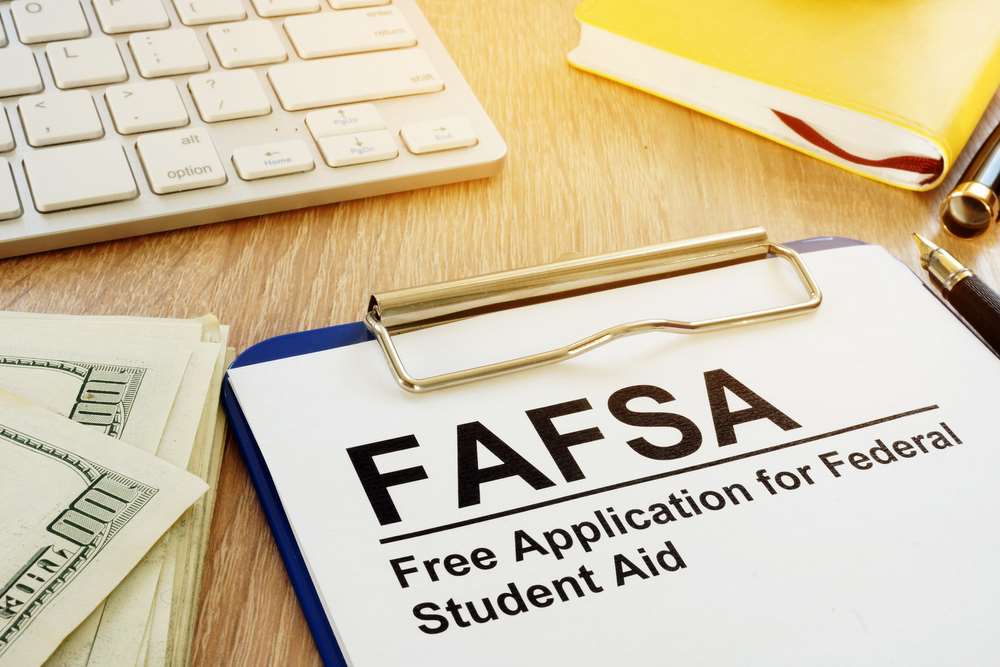Suppose you are interested in applying for FAFSA, this post is for you!
This post is mainly written for those interested in FAFSA and looking to apply for it, addressing the basic information concerning FAFSA, and also detailing the criteria for one to be able to qualify for FAFSA.
Description
The Free Application for Federal Student Aid, or FAFSA, is a form that students in the United States can fill out to apply for federal financial aid for college or career school.
This financial aid can come in the form of grants, loans, or work-study programs. And if you’re planning on pursuing higher education in the United States, it’s important to know how to qualify for FAFSA.
Eligibility
Eligibility for FAFSA relies on a variety of factors, including;
- Financial situation,
- Your academic status,
- And your citizenship status.
In general, to be eligible for FAFSA, one must:
- Be a U.S. citizen, U.S. national, or an eligible non-citizen.
- Have a valid Social Security number.
- Have a high school diploma or GED.
- Be enrolled or accepted for enrollment in an eligible degree or certificate program.
- Not be in default on any federal student loans or owe a refund on any federal grants.
- Be registered with the Selective Service (if you are a male between the ages of 18 and 25).
- Maintain satisfactory academic progress (SAP) in college or career school.
Other Requirements
In addition to these general requirements listed above, there are also financial eligibility requirements for FAFSA.
Below are listed the requirements to qualify for financial aid:
Demonstrate financial need: Financial need is determined by subtracting your expected family contribution (EFC) from the cost of attendance (COA) at the school you will be attending. Your EFC is the extent of your family’s financial strength and is based on your family’s income, assets, and benefits.
The COA includes tuition and fees, room and board, and other expenses such as books and supplies. And If your EFC is less than the COA, you may be eligible for financial aid.
Not have exceeded the maximum timeframe for receiving financial aid: The maximum timeframe for receiving financial aid is typically equal to 150% of the length of the program in which you are enrolled. For example, if you are enrolled in a four-year bachelor’s degree program, you can generally receive financial aid for up to six years.
Required Documents
For one to be able to apply for FAFSA, one will need to gather certain documents and information, such as:
- Social Security number
- Driver’s license
- Tax returns
- W-2 forms
- Bank statements.
You will also require to provide information about your parents if you are a dependent student. Once you have gathered all of the necessary documents and information, you can fill out the FAFSA form online at fafsa.gov.
It’s crucial to point out that the FAFSA form becomes available on October 1 of each year, and it is best to complete the form as soon as possible.
Some financial aid is awarded on a first-come, first-served basis, so the earlier you apply, the better your chances of receiving financial aid.
Once you have completed the FAFSA form, your application will be reviewed and you will receive a Student Aid Report (SAR), which summarizes the information you provided on the FAFSA form.
The SAR will be sent to the schools you listed on your FAFSA form, and these schools will use the information to determine your eligibility for financial aid. You may also be asked to provide additional documentation, such as;
Proof of income or Tax transcripts, to verify the information you provided on the FAFSA form.
It’s important to carefully review your financial aid award letter and understand the terms and conditions of the financial aid offered to you.
Types of Financial Aid
There are several types of financial aid, but the most common of all are listed below:
- Grant
- Scholarship
- Work Study
- Loans
Grant
Grants are funds from the government, which they use to fund your ideas and projects to provide public services and promote the economy.
As stated earlier grants are some of the most common forms of federal assistance/aid. Federal financial aid is a wide term to refer to the numerous strategies the government redistributes resources to eligible recipients.
Click on the link below to find grant and cooperative agreement opportunities from federal agencies.
Scholarship
The scholarship is another type of financial aid, mainly awarded to students and this type of financial aid doesn’t have to be paid back to be repaid.
When compared to grants, which are normally need-based, scholarships are more often merit-based. That means they will depend on a student’s achievements in areas like academics, community involvement, or athletics.
Scholarships are granted by various organizations, incorporating the government, colleges, employers, individuals, nonprofits, religious groups, and private organizations.
Scholarships can come in different configurations, such as a full-tuition scholarship, partly paid tuition scholarship or one-time award.
Overall, the funds generally must be used to pay for tuition and education expenses deemed necessary by the school the candidate attends.
To apply for scholarships, you can search numerous databases, and for those interested in applying for scholarships, click on the link below.
Work-Study
This Is another financial aid option determined by the completion of the FAFSA which is a form by which current and prospective college students are determined whether or not they are eligible for student financial aid.
As the FAFSA enables students to work part-time and earn money to pay for school. The program emphasizes employment in community service areas, as well as work related to your course of study (whenever possible).
Work-study jobs may be on or off-campus. Off-campus jobs are typically provided by public agencies or private nonprofit organizations.
Loans
Student loans are financial assistance. But for more understanding, student loans are funds that can help cover tuition and registration fees, as well as associated costs, such as accommodation textbooks, or a laptop/devices you’ll need for your studies.
Student loans are another type of financial aid accessible to college students. Both federal and private student loans empower students with money that needs to be repaid, with interest, over a set period.
And when it comes to borrowing money, student loans are similar to mortgages in that they are considered “good debt.” Both are large amounts of money and they usually take a long time to pay back.
Note: it’s also important to note that FAFSA is just one way to pay for college or career school. There are other options available, such as scholarships, grants, and loans from private organizations, as well as employer tuition assistance programs.
Conclusion on How To Qualify For FAFSA
In conclusion, suppose you are planning on pursuing higher education in the United States, it’s important to know how to qualify for FAFSA.
To be eligible for FAFSA, you are required to meet certain academic and financial eligibility requirements, and you must gather all of the necessary documents and information(which are all listed above in the post).
By filling out the FAFSA form as soon as it becomes available, you can increase your chances of receiving financial aid to help pay for your education.
Robomin is a freelance writer and blogger who covers topics related to Account Creation, gadgets, Refunds, and how to delete An Account. He has a passion for new and innovative technology and enjoys sharing his knowledge with others

